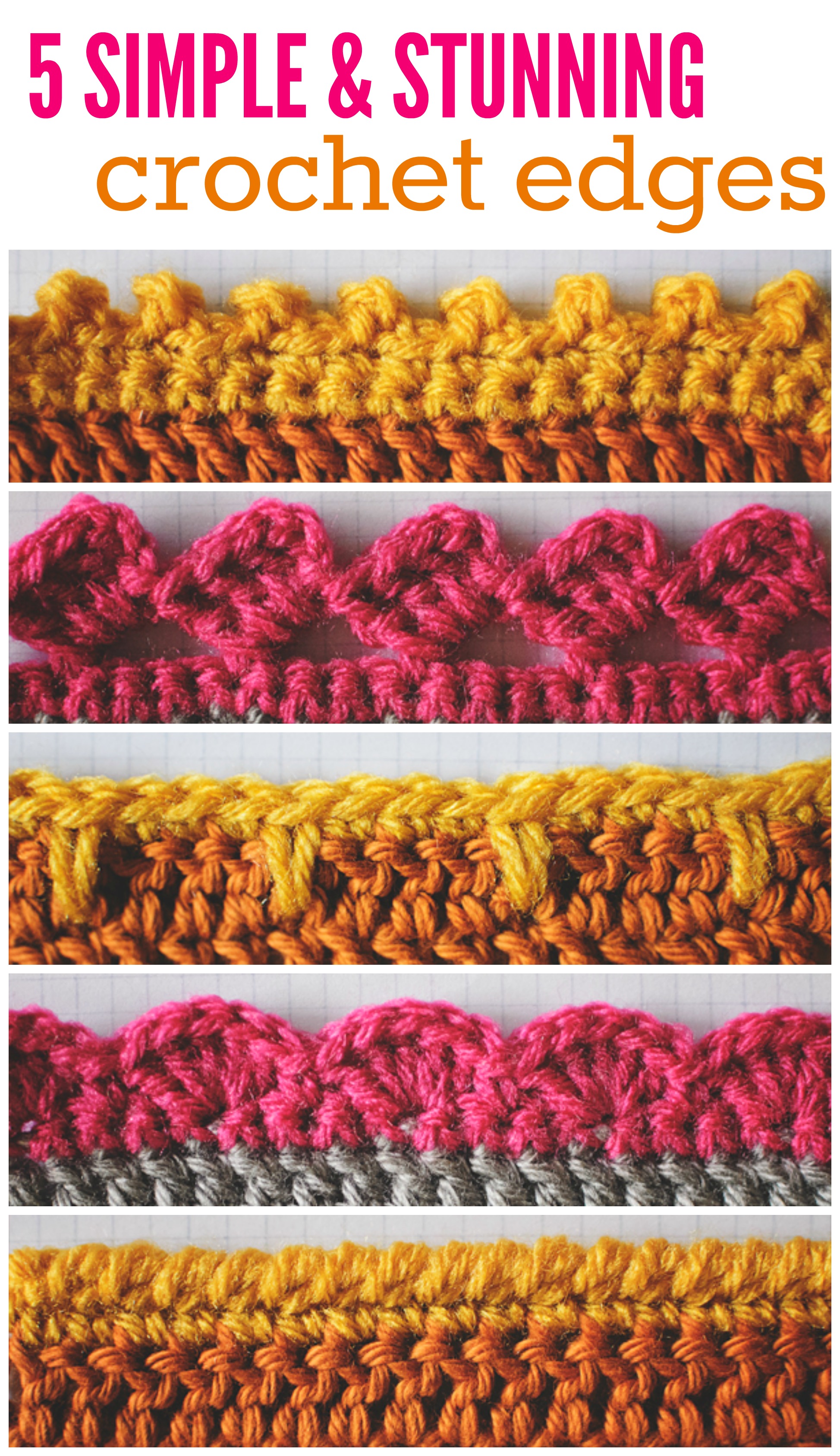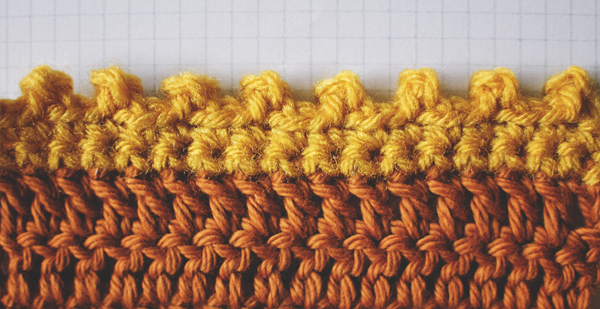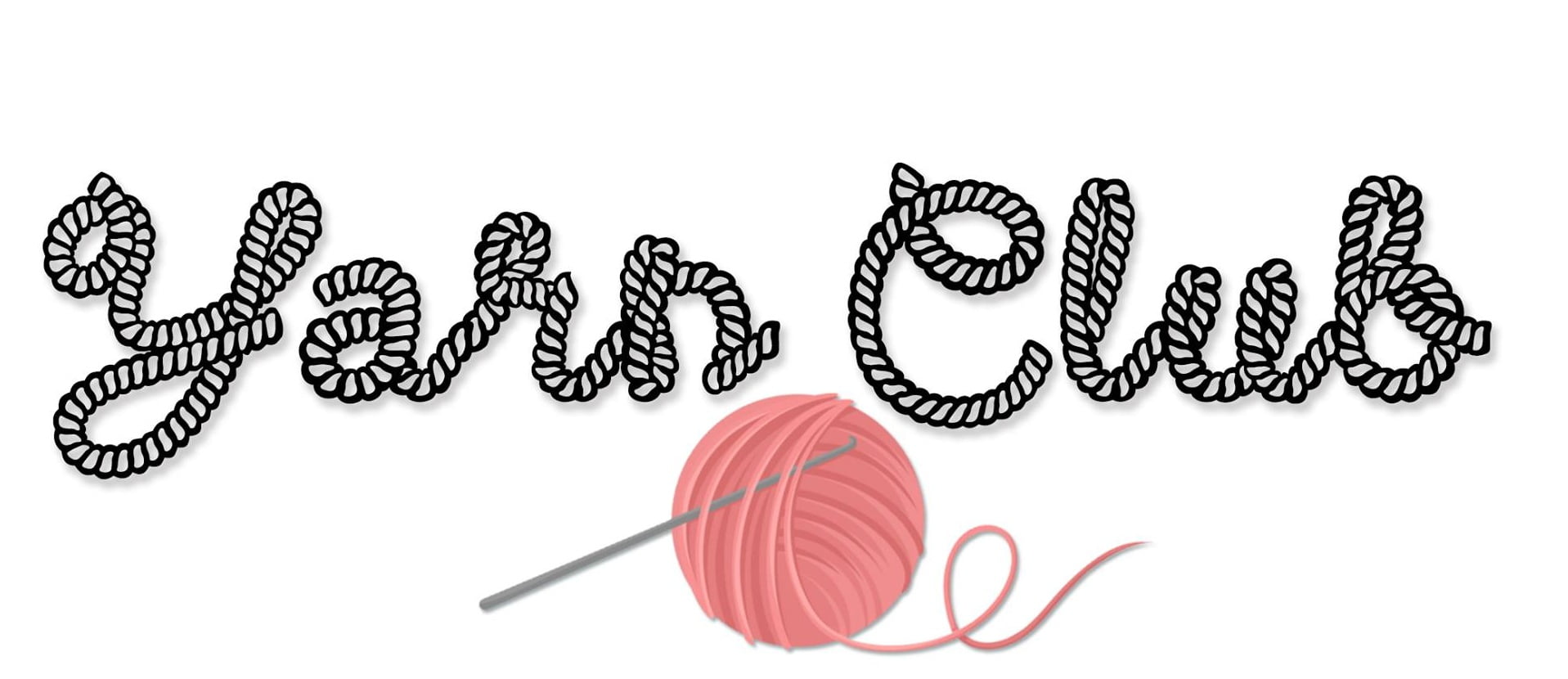Crorchet Edges
5 Crochet Edges That’ll Beautifully Finish Any Project
Your choice of crochet edge can seriously make or break your design. Sure, you can leave it unfinished, but by choosing the right edging stitch, your project just gets even more eye-catching.
Good to Know: Just to be clear, we’re talking edgings here — the kind you work directly on a piece of crochet — not trims, which are worked separately, then attached.
5 Crochet Edges You’ve Gotta Try
You might want to memorize these (seriously!). That way, when you get to the end of a project, you already have a few ideas about how to finish it off.
Pro Tip: Crocheting a row of double crochet is best before you start an edge pattern so you can work on an even line, especially if you’re working a side.
Crab Stitch

The crab stitch makes for a great corded edging. It’s a subtle and sophisticated finish that’ll be the easiest to memorize and use, so make friends with it now!
Worked over: any number of stitches
Finish it: Work an odd number of rows (at least one) of single crochet. At the end, do not turn — CH 1, skip the stitch directly to the RIGHT and reverse double crochet (rev DC*) into each DC, ending with a sl st in the turning chain of the previous row. Fasten off.
Worked in the round: sl st into first DC, Ch 1, then continue as for working flat, ending with a slst into first rev DC.
*rev DC (worked from left to right): Insert hook in next stitch to the right, yarn over, pull loop through, yarn over, pull through both loops on hook.
Shell Edging

Shell edging: worked after one row of contrasting DC.
Shells give you a more dainty looking finish, perfect for blankets and garments. You can even use this edging on non-crocheted items such as pillowcases to make them extra.
Worked over: multiple of 4 stitches + 1
Finish it: Ch 1, DC in first st, *skip 1 st, 5 TR in next st, skip 1 st, 1 DC in next st; Rep from * to end, DC in last st (or turning ch, if you work in the turning chains). Fasten off.
Picot Edging

Picot edging: 3 chain picots with two stitches between each.
Use picots for a decorative edge that’s not going to outshine the pattern. This really simple edge uses only double crochet and chains.
Worked over: Any number of stitches, depending on how you want to space the bumps (picots).
Finish it: Treat this like a row of DC. After the first stitch, Ch 3, 4, or 5 and slst into first ch (picot made!). Work two, three, or four stitches, then make another picot. Continue working as such, ending with a picot over the second to last DC.
Block Edging

These stitches are basically “leaning TR groups,” and make a pretty interesting edge. If you want to put them in a pattern, your next row can be made by crocheting into the corners of each little block and chaining to get to the next.
Worked over: Multiple of 4 stitches + 3
Finish it: Ch 3, skip first 3 stitches, *1 TR in next st, Ch 3, 3 TR around the post of the TR, skip next 3 stitches; Rep from * to last 3 stitches, Ch 3, slst in last stitch or turning chain of previous row.
Worked in the round: Ch 6, TR in 4th ch from hook, TR in next ch, 2 TR in first ch, skip next 3 stitches, * 1 TR in next st, Ch 3, 4 TR around the post of the DC, skip next 3 stitches; Rep from * around, slst into third chain of beg-ch.
Blanket Edging

Blanket edging, sometimes called the spike stitch, gets its name because it resembles the blanket stitch in embroidery. It’s a simple stitch that looks best in a contrasting color.
Worked over: Any number of stitches.
Finish it: This stitch utilizes the spike DC. Space them to suit the number of stitches you have in the row or round.
For example (multiple of 4 stitches + 3):
Ch 1, DC in first 3 stitches, *1 DC in next stitch by inserting your hook about 1/4″ below the edge, 1 DC in each of the next 3 stitches; Rep from * to end. Fasten off. You can make the spikes longer by inserting your hook lower in the main piece.
